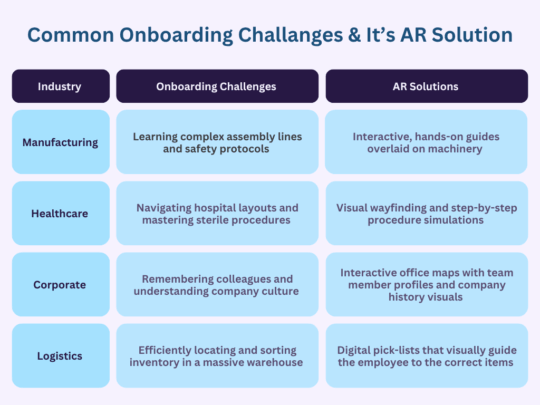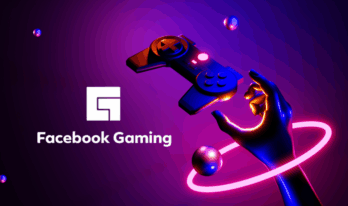The first day at a new job is an important moment. It sets the entire journey of an employee in the company. Recall that initial day experience? Understanding ample new names, the strange office culture, and the stress of mastering complicated procedures in a short time.
For most, it's an intimidating experience. But what if the first day on the job were less daunting and more like a fun, self-guided tour? What if they could learn their new job not from reading a fat manual, but from doing it in a safe, interactive environment? This is not a dream of the future anymore. This is the new reality created by augmented reality employee onboarding.
Unlike virtual reality, which establishes a fully digital environment, augmented reality (AR) superimposes useful digital information on the physical world. Imagine having a useful colleague always with you, pointing out what to do and where to go. With a smartphone, tablet, or a pair of smart glasses, a new employee can watch step-by-step directions hover over a piece of equipment.
They are able to receive a pop-up bio of someone they just met or embark on a virtual walk-through of a facility located thousands of miles away. This technology is changing a traditionally paper-intensive process into an interactive, hands-on experience that new hires not only comprehend but actually enjoy.
Why Legacy Onboarding Shortchanges and AR Fills the Gap?
For decades, traditional onboarding has used a tried trio: policy binders, lecture-style training, and following a harried peer around. Well-intentioned as it is, it has major deficiencies. Overload of information is prevalent, and an impressive 88% of employees report that their company doesn't do a great job with onboarding.
This results in poor memory of key information, a longer time for employees to be at maximum productivity (what HR terms 'time-to-competency'), and worst of all, a greater likelihood of that new hire not lasting the first year.
Augmented reality employee onboarding addresses these challenges head-on by turning learning into an active process, not a passive one. Rather than watching a safety procedure, a new warehouse employee can wear an AR headset to observe a digital hologram performing the proper technique for driving a forklift, with warning icons annotating potential risks.
This 'learning by doing' method has been proven to be much more successful. A study found that using augmented reality (AR)-based e-content significantly improved students’ learning retention and critical thinking skills in middle school settings.
Real-World Applications of Augmented Reality Employee Onboarding
To get a picture of the actual effects, let's examine how real businesses are utilizing this technology.
A great illustration is from the manufacturing giant Boeing. It takes an enormous task to teach technicians to build the incredibly sophisticated wiring of an aircraft wing. Historically, trainees spent their time repeatedly glancing between the actual wing and huge, intricate paper diagrams.
Today, they work with AR glasses that display digital wiring diagrams and 3D animations right onto the work surface in front of them. This has reduced production time by 30% and the error rate by 90% for their trainees. The augmented reality employee onboarding platform not only instructs them but also directs their hands in real time.
But its application is not just confined to technical areas. In retail, a retailer like Walmart applies AR to train hundreds of thousands of new store employees. With simulated situations on a tablet, workers can practice operating a crowded checkout line, responding to an angry customer, or spotting a spill hazard on an aisle, all without the pressure of an in-the-field error. It creates confidence and guarantees a standard level of training across every location.
Understanding Common Onboarding Challenges and Its Ultimate Solution: Augmented Reality Onboarding
The table below shows how AR onboarding addresses various issues in various industries:
The Human and Business Return on Investment: Something Greater than a Hip Gadget
The benefits of having an augmented reality employee onboarding program go well beyond the first day. For the new hire, they are intensely personal. It significantly lessens first-day jitters, substituting them with feelings of empowerment and confidence. They are more engaged with the company's technology and innovation, which increases their sense of belonging. It makes them realize that their new company is committed to their success right from the start, and that is a strong method for creating loyalty.
The return on investment for the company is evident and compelling. Organizations that employ immersive training techniques have a 70% higher rate of retention in their employees. This results in a more productive workforce much more quickly, cutting costs on lengthy training times.
In addition, by replicating hazardous conditions in a safe environment, AR onboarding greatly enhances safety in the workplace, resulting in fewer accidents and less injury. It also streamlines training by ensuring that each individual employee, no matter where they are or who trains them, gets the same high-level instruction. This is essential for brand consistency and operational excellence.
Getting Started with Your AR Onboarding Journey
Adopting this new standard doesn't have to be a daunting, all-or-nothing endeavor. The most successful implementations start with a clear, specific problem. Perhaps your biggest onboarding headache is training employees on a single, critical piece of equipment. That’s the perfect place to start. Develop a single, effective AR module for that one machine and measure the results.
The hardware itself is also coming down to cost. Dedicated AR glasses are certainly available, but even powerful augmented reality employee onboarding experiences can be executed on the smartphones and tablets employees already own. The key is in the content; the training needs to be well-designed, intuitive, and actually helpful. It needs to be something that feels like a helpful tool, not some convoluted piece of hardware.
The Future is Here!
The initial impression a business leaves with a new hire is one that sticks. By adopting augmented reality employee onboarding, companies are opting to make that impression an innovative, helpful, and clear one. It's bridging the divide between learning and doing, new and able. It's turning worry into confidence and making a cookie-cutter process a tailor-made experience. In the war for talent, providing a new, efficient, and truly useful onboarding experience isn't merely a nice benefit. It is fast becoming the new norm for creating a self-assured, skilled, and committed workforce.
To learn more, visit WisdomPlexus!
FAQ
Q: What are the 5 C's of onboarding?
Ans: The 5 C's of onboarding are compliance, clarification, culture, connection, and checkback. All these help fresh hires settle su jmoothly. They include rules, role clarity, company culture, relationships, and follow-up care.
Q: What is an augmented reality in HR?
Ans: Augmented Reality (AR) in HR employs technology to design interactive training or onboarding experiences. It combines digital items with the real world to create more engaging and immersive learning.
Also Read:
What Is Facebook Augmented Reality Ads and How Does It Work?
AI-Generated Content for VR and AR: Opportunities, Challenges, and Use Cases





